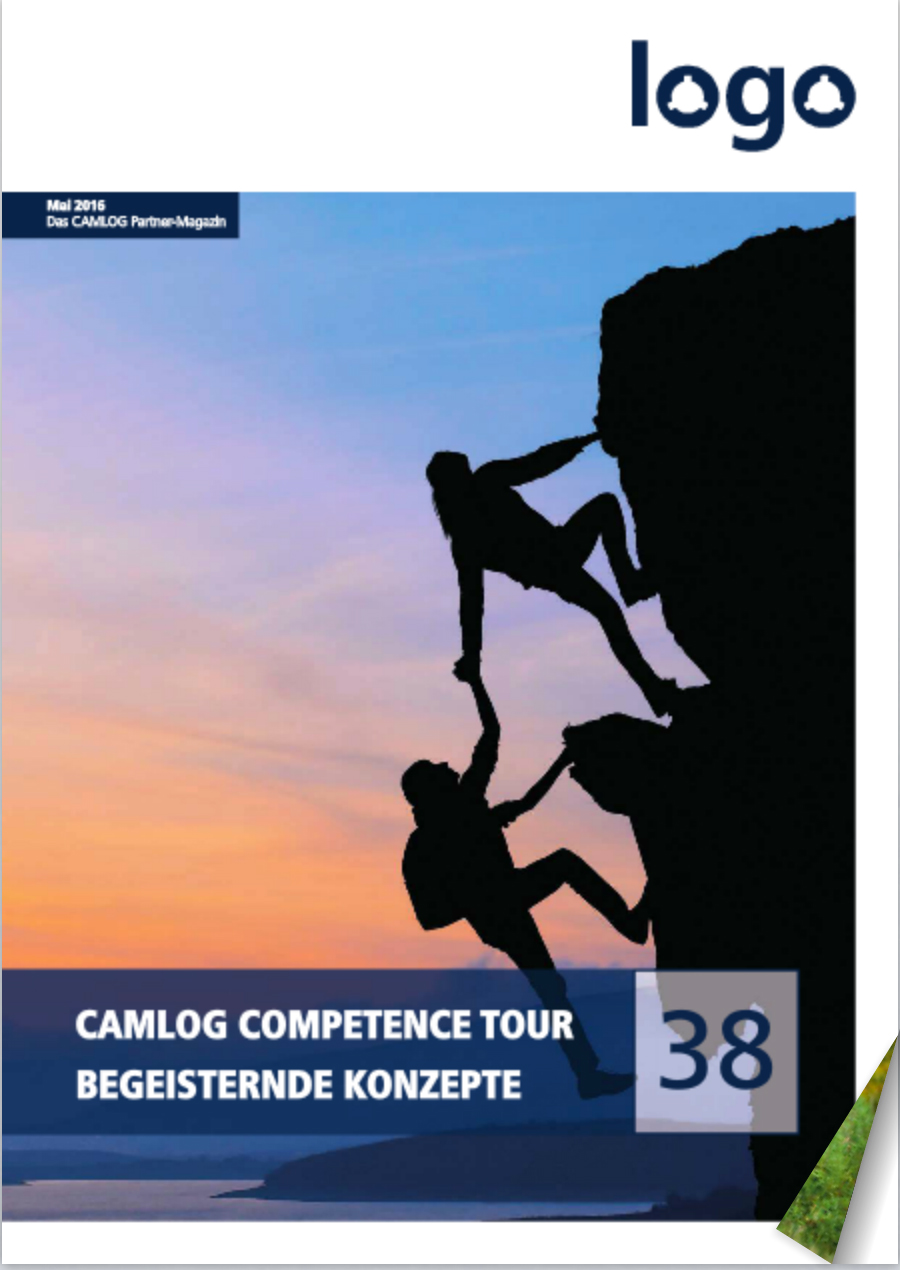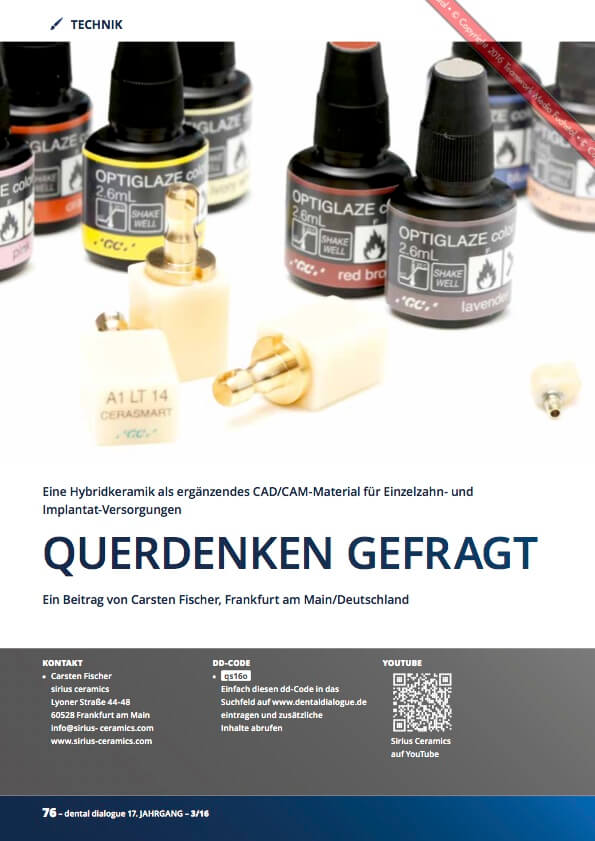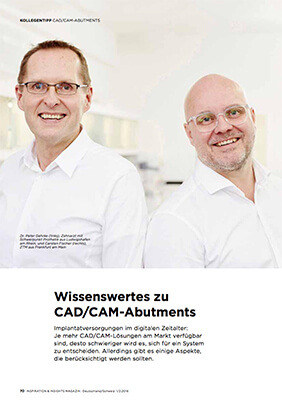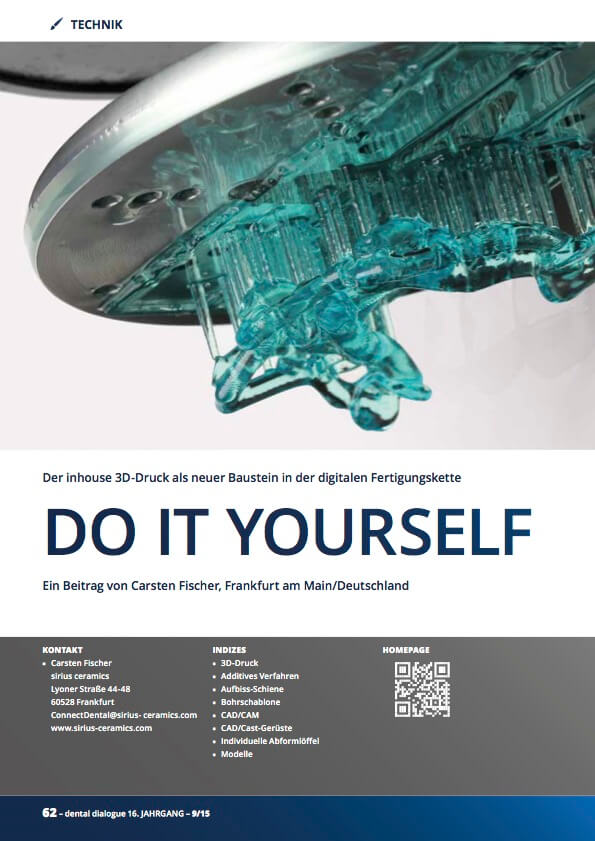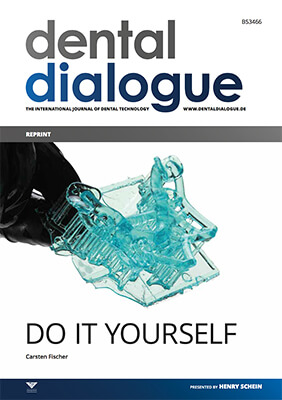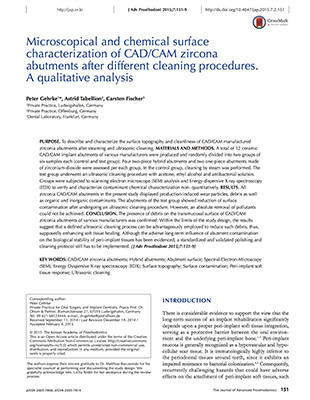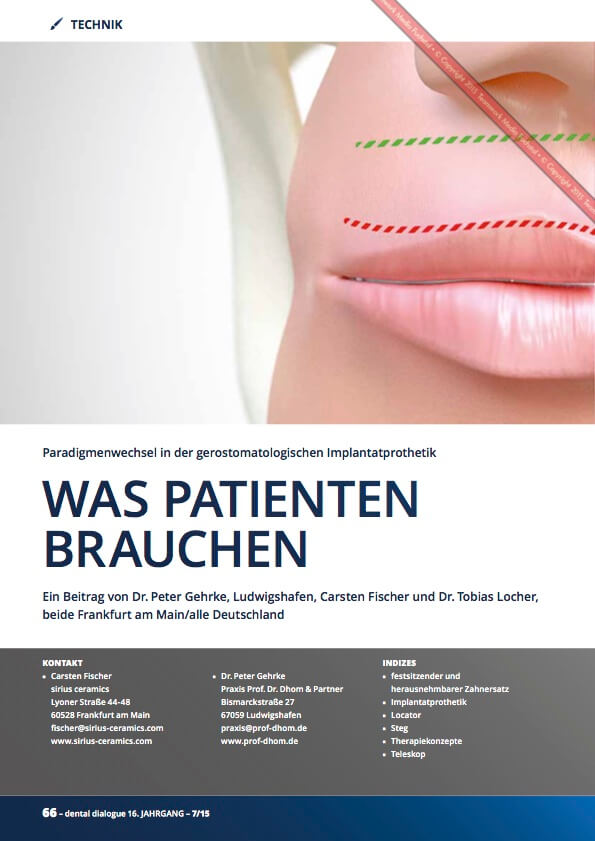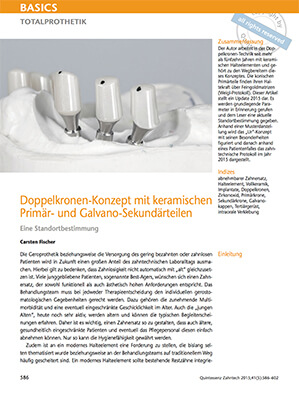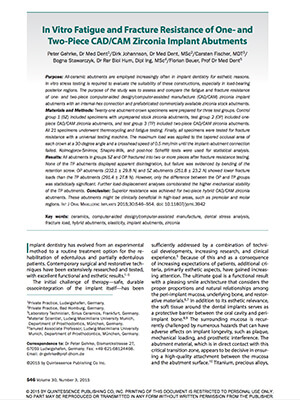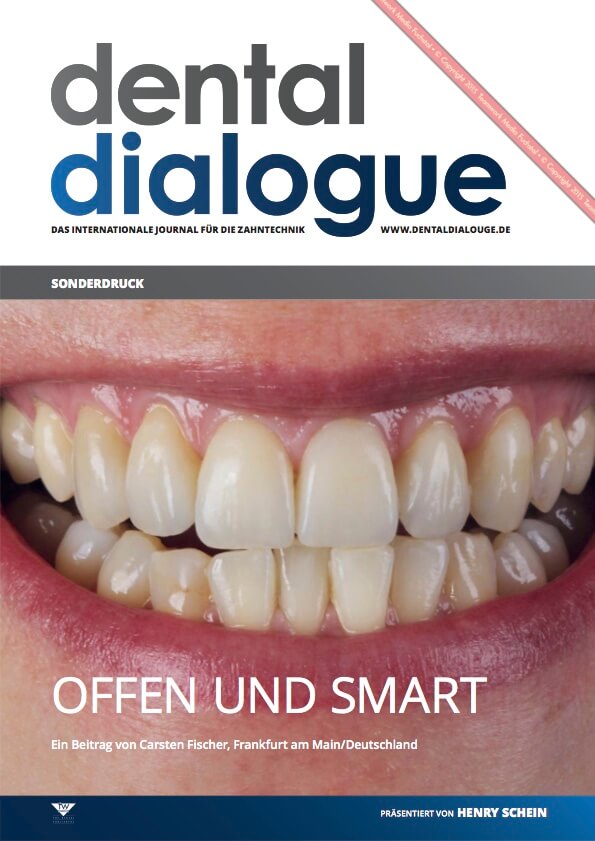Sometimes the future starts there where you would not expect it, for example right in the middle of the conventional – “Do it yourself”. Structural change within dental technology started with CAD/CAM and with innovative materials such as zirconia, but that was quite a few years ago. A new manufacturing technology – 3D printing – has now become avail- able. This article describes, from the perspective of a lab owner, how 3D printing can be usefully integrated into the treatment procedure and laboratory work ow. The author also explains how 3D printing is changing the production process in the laboratory and what the advantages are for the dental technician.
Weiterlesen

